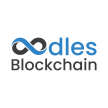Discover the Power of ERC-404: An Experimental Ethereum Token
The cryptocurrency market continuously evolves and amazes.

Introduction
The cryptocurrency market continuously evolves and amazes. It is also the case when looking at the latest experimental Ethereum standard, ERC-40. It may answer all the new tokenization experiments on Bitcoin if we view it as a competitive playground. In this article, we look at how this new standard token reshapes how users can own and trade NFTs and enhance their utility in the future.
What is ERC-404?
ERC-404 is an experimental token standard that combines ERC-20 (fungible tokens) and ERC-721 (non-fungible tokens). It enables tokens under this standard to simultaneously be fungible and non-fungible. It acts as an innovative token standard to form a whole new kind of asset.
Pseudonymous creators "ctrl" and "Acme" developed ERC-404, which launches an unexplored category of digital assets called semi-fungible tokens. It introduces native fractionalization and liquidity to NFTs, fostering and widening access to valuable digital assets.
Several major projects, including Pandora, DeFrogs, Monkees, Punks404, and EtherRock404, are exploring the semi-fungible token standard. They are pioneering the use of these tokens while offering enhanced liquidity and fractional ownership, which in turn showcases their potential to revolutionize the NFT market.
Comprehending the Hybrid Nature of ERC-404
The experimental Ethereum token standard ERC-404 has been officially developed to merge the features of fungible (ERC-20) tokens with non-fungible tokens (ERC-721) to create a hybrid form. It allows a token to be fungible when traded in parts and non-fungible when held collectively. This dual nature is facilitated through a unique mint and burn mechanism, which ensures a non-fungible token's uniqueness is preserved.
This allows for the representation of unique and divisible assets on the blockchain. Let's explore ERC-404 tokens in depth, how they function, and their potential.
- Fungibility and Non-Fungibility Combined
An ERC-404 token can act as a fungible token when traded in fractions but represents a non-fungible token when it is whole. This duality is maintained through a process where an NFT is burned upon fractionalization, and a new one is minted when fractions are recombined into a whole token.
- Fractional Ownership of NFTs
One of the key features of ERC-404 tokens is their ability to enable fractional ownership of NFTs. This is accomplished by associating a fungible token with an NFT and dividing the NFT into smaller, tradable parts. This mechanism enhances liquidity and accessibility in the NFT market.
- Minting and Burning Mechanism
We discussed the unique minting and burning strategy, which ensures that the ERC-721 non-fungible token retains its unique properties while allowing the ERC-20 component to be traded in parts.
The idea is that leveraging the fungibility of tokens can extract liquidity, which is the primary use of fungible assets. However, this creates a dilemma if someone owns multiple collectibles, which specific one gets burned upon redeeming these tokens. This is particularly problematic when considering the variance in value among different collectibles.
Benefits of ERC-404 Tokens
The ERC-404 standard brings several advantages to the digital asset ecosystem:
- Liquidity in the NFT Market
This new token standard was introduced to enhance the liquidity of NFTs, which was one of the significant challenges in the NFT markets. In traditional markets, you need to post NFTs and wait for potential buyers, which can slow the process, especially if you hold large amounts.
- Improved Market Fluidity
In addition, an ERC-404 token can be sold on these traditional NFT markets if a user chooses to do so. This greater flexibility drastically improves liquidity, as there are more ways to buy or sell.
- Native Fractionalization of NFTs
Finally, this new standard reduces barriers for investors interested in high-value NFTs who don’t have the funds to buy them completely.
Previously, this was only achieved by separate fractionalization protocols. As in crypto, cutting out the middleman and leaving the user with the possibility to break down an NFT themselves democratizes ownership.
- Integration with DeFi Protocols
The standard allows ERC-404 tokens to be incorporated into core DeFi protocols, such as lending, without requiring separate NFT fractionalization services. It will open up new token usage and liquidity avenues within decentralized finance.
Applications and Use-Cases of ERC-404 Token
The significance of ERC 404 lies in its ability to introduce native fractionalization and liquidity to the NFT market. This opens new avenues for asset management and trading and fosters innovation and engagement within the digital asset ecosystem. By blending the advantages of ERC-20 and ERC-721 tokens, ERC 404 provides at-par use cases in the real world.
- Tokenization of Assets
Tokenization replaces a sensitive information or data element with a non-sensitive substitute known as a token. The tokenization of tangible world assets could leverage the new standard to facilitate fractionalized ownership of assets such as real estate, art, equipment, and luxury items.
- DeFi
ERC’s contracts create NFTs and tokens simultaneously and at a preset ratio. They are combined, and actions like selling or buying affect both. Thus, it would allow the introduction of new types of assets for collateral. The fractionalization of assets would also enable participants to break down the value of portfolios and liquidate them to generate additional income via sales or lending.
- Gaming and NFTs
Asset ownership, transferability, and interoperability are at the forefront of value in terms of ERC-404 utilization in the gaming and NFT sectors. The new standard would allow developers to fractionalize in-game assets, thus opening up an entirely new dimension in gameplay mechanics and streamlining virtual economies.
- Supply Chain Management
Transparency, verification, and efficiency are crucial aspects of supply chain management. ERC-404 can help address these issues by simplifying the issuance of unique IDs to different supplies.
Examples of ERC-404 Projects
Some notable projects have been developed using the token standard ERC-404. Let's take a closer look at some of them.
- Pandora
One of the most notable projects that adopted this innovative standard is Pandora. Launched on February 2nd, Pandora has quickly become a pioneer in the ERC-404 movement.
Pandora's popularity has grown significantly, with a 12,000% increase in just one week. With a market cap of nearly $300 million, it had a trading volume of $10 million within the first five hours of its launch. As a result, both the NFT community and ERC-20 token traders have taken notice of Pandora's success.
- DeFrogs
Another collection of NFTs projects, DeFrogs, is one of the earliest ERC-404 tokens to launch. It claims to be an adjusted version of the ERC-404 standard used by Pandora. DeFrogs combines meme culture with the latest ERC-404 narrative to build a community around itself, featuring a collection of 10,000 cartoon frogs PFPs.
- Monkees
Although the project is newer than the other two mentioned above, it has significantly benefited from the success of those who came before it.
The Monkees project is a collection of monkey PFPs built on the same ERC-404 standard. Launched in the early hours of Thursday, the token's price has risen more than 2,000% from its launch price to trade at $17,000 per token at the time of writing. This puts its market cap at $1.8 million with liquidity of $256,000.
- EtherRock404
EtherRock404 (ROCK) is another project leveraging this token standard. Significant trading activity has been observed in the decentralized exchange, further confirming the propositions of the ERC-404 standard as a freely tradable NFT.
The project describes itself as a 'zero utility' project – the only purpose of the 404 Rocks is to be bought and sold. EtherRock404 adopts the random mint and burn approach to managing the ERC-721 aspect of the token. For every whole EtherRock404 token purchased, a new EtherRock404 NFT is minted.
ERC-404 vs ERC-20 vs ERC-721
An ERC or Ethereum Request for Comment is a proposed standardization and set of rules based on smart contract principles to support certain aspects of tokens and decentralized finance interactions.
The ERC or Ethereum Request for Comment is a proposed standardization and set of rules for smart contract principles that support tokens and decentralized finance interactions. The ERC-404 token standard combines the features of ERC-20 and ERC-721. This standard doesn't aim to be the "best of both worlds" but rather to combine them. It incorporates the concept of fractionalization into the smart contract standard.
Let’s quickly differentiate among all three with the overview of the table below:

Conclusion
To sum up, blockchain innovation has advanced extensively with ERC 404, which provides a flexible way to combine the advantages of fungible and non-fungible tokens. The potential of ERC 404 projects to substantially impact the digital asset field. It encourages creativity and provides new asset management and trade opportunities. Thus, the benefits of ERC-20 and ERC-721 tokens are combined in ERC 404, paving the way for a more dynamic and inclusive digital asset market.
To experience one of the best Ethereum development services, feel free to contact our skilled Ethereum developers today.
About the Creator
Oodles Blockchain
Full-Stack Blockchain Development Services and Solutions for Startups and Enterprises for Business Excellence






Comments
There are no comments for this story
Be the first to respond and start the conversation.